How Garryowen and the Standard Scout Platoon Equal Effective Recon
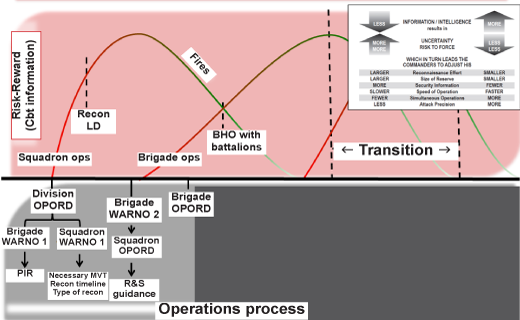
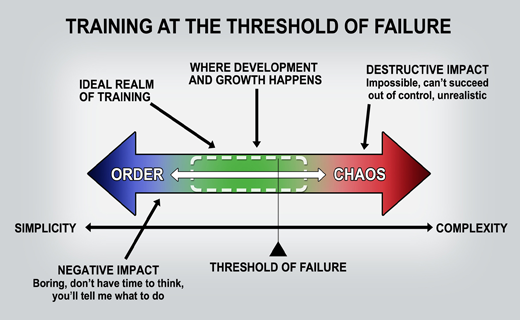
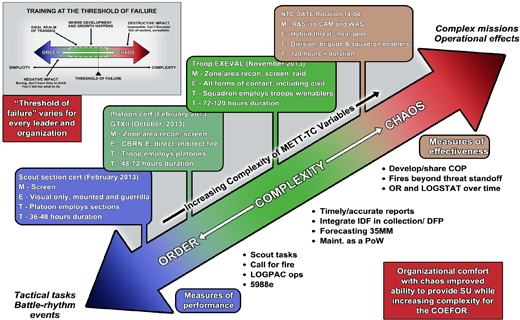
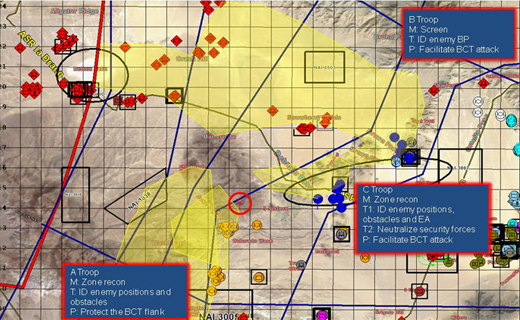
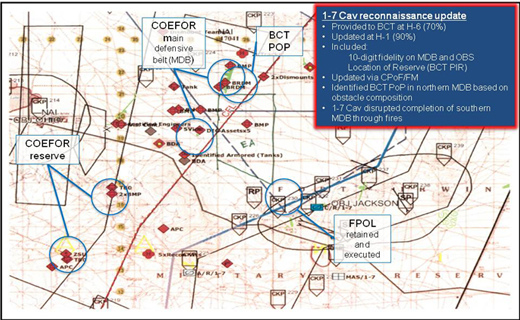
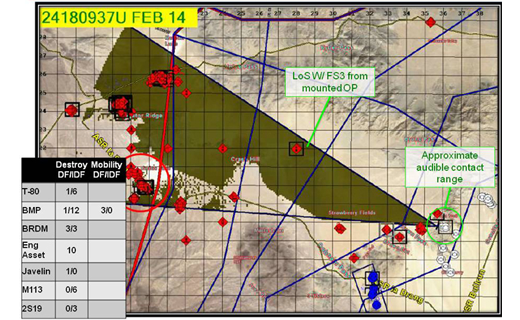
(Editor’s note: The Maneuver Center of Excellence (MCoE) recently ended an eight-month study of the armored brigade combat team’s (ABCT) standard scout platoon (SSP) 6x36 force-design update (FDU), which consolidated data and analysis by U.S. Army Training and Doctrine Command (TRADOC) Capability Managers ABCT/Reconnaissance, Office Chief of Armor (OCOA), Directorate of Training and Doctrine (DOTD) and Capabilities Development and Integration Directorate (CDID). The test unit was 1st Squadron, 7th Cavalry, 1st Cavalry Division, from Fort Hood, TX, who has provided this article and the following three articles for this edition. The 1-7 Cav converted each of their six scout platoons into the 6x36 configuration in September 2013. MCoE’s study culminated in a SSP proof of principle, concluding that the SSP FDU provides the best organization to ensure scout platoons possess the required leadership, versatility, survivability, protection, mobility and firepower to perform reconnaissance and security missions against any opponent in the future operational environment. A report written on the study outlines the SSP formation’s performance and addresses the way-ahead to mitigate identified doctrine, organization, training, materiel, leader development, personnel and facilities (DOTMLPF) gaps and limitations. The full report is available at https://www.milsuite.mil/book/docs/DOC-141790.)
Comanche Troop, 1-7 Cavalry, screening in the Debnam Pass complex, had been in and out of direct-fire contact since sunrise while providing early and accurate warning for the brigade. In the early afternoon, they were yet again under direct-fire contact with a Donovian reconnaissance element when a dismount observation post (OP) from 1st Platoon – forward of the main screen line by 500 meters with the Processing, Exploitation and Dissemination (PED)-5 Target Reconnaissance Infrared Geolocating Rangefinder (TRIGR) – identified a platoon-sized element consisting of two T-72s and two BMPs moving into and establishing an attack position. The call immediately went to the section leader, who confirmed the grid to the attack position, and then called it to Comanche 14, the troop fire-support officer. Comanche 14 refined the grid, distance and direction, and using a tactical trigger, initiated an indirect-fire mission with 155mm Dual-Purpose Improved Conventional Munitions at his command. The OP observed the effects on target and estimated all four vehicles of the platoon-sized element were mobility kills. Immediately, the 1st Platoon leader, Comanche 6, and Comanche 14 called “Repeat!” A second fire mission resulted in four catastrophic kills, spoiling a Donovian Raid against 1st Armored Brigade Combat Team (ABCT) and eliminating a critical mission-command node in the lead of the raid, the Donovian brigade commander, from the battlefield.
The 1st Squadron, 7th U.S. Cavalry Regiment’s performance at the National Training Center (NTC) was based on a deliberate training and leader-development plan executed over 15 months with a goal of building expertise in reconnaissance and security (R&S) operations. In this article, we will show that the combination of our methods and the capabilities of the 6x36 Bradley standard scout platoon (SSP) enabled effective reconnaissance necessary in decisive-action operations.
Simply stated, Garryowen accomplished this through three steps. First, we defined R&S operations conceptually. Second, we developed a training methodology that enabled the translation of this concept into the training of R&S operations. Third, our experience through our train-up and execution during NTC Rotation 14-04 proved that the SSP, with Bradley Fighting Vehicles (BFVs) and scout squads, provided effective reconnaissance.
In Step 1, we will show how we defined reconnaissance by creating an operational framework replicated in each iteration. In Step 2, we will provide examples of how we trained reconnaissance through vertical and horizontal nesting of echelons during every event; repetition with increasing complexity varying forms of contact; and mission, enemy, terrain and weather, troops and support available, time available and civil considerations (METT-TC) to develop tactical judgment in reconnaissance leaders from the section to squadron. In Step 3, we will use our experiences specifically from NTC Decisive Action (DA) Rotation 14-04 to show how the increased operational reach and tempo of the BFV-SSP improved our squadron’s ability to provide the BCT with situational understanding.
The following is how 1-7 Cav defined R&S operations and built the foundation necessary to conduct R&S operations during a DA rotation at NTC (DA Rotation 14-04). See Figure 1.
Step 1: what is reconnaissance? The cognitive framework
The experience of the last 10-plus years in two conflicts has led most in the Army to see reconnaissance as synonymous with surveillance. Reconnaissance means different things to different people at echelon. At the troop and platoon level, it is a task. At the squadron level, it is an operation. At the brigade-and-above level, it is an effect.
To begin, we asked the question, “What is reconnaissance?” We developed the answer through the simultaneous implementation of a training methodology that taught reconnaissance leaders how to think about R&S operations, trained them to conduct these operations by manipulating METT-TC variables to focus training outcomes and provided repetition through increasing complexity to grow expertise. The answer we validated at NTC was that reconnaissance is a collection of tactical tasks, movement techniques and formations for a platoon. For a troop, it is a mission, and for the squadron, it is the effect of generating understanding from uncertainty and ambiguity to enable BCT decisions and actions ahead of the enemy at echelon.
As a squadron, we wanted to enable reconnaissance pull ahead, in time, of the threat’s reconnaissance pull. Although the BCT never pushed us to confirm or deny a specific enemy course of action (CoA) or template, we used initiative to generate options for the BCT commander from initial guidance and limited threat understanding. Our operational framework was that, at the tactical level, troops and platoons must gain visual contact first to allow themselves and friendly units at echelon to gain and maintain threat contact while maintaining freedom of maneuver, and providing the knowledge and understanding for the BCT commander to make decisions ahead of the threat.
This enables the squadron to rapidly transition from event to event. This framework established the basis of a time-in-space-based decision-making cycle instead of the more typical space-in-time one used by the contemporary-operating-environment force (COEFOR) at NTC. The difference being, the COEFOR uses the latter method using terrain-based decision points to retain and generate options, thus dictating the tempo of their choosing to the blue force. For us, the former method relied on using time to set the tempo of operations, disrupting the COEFOR’s use of terrain to generate options, but instead limiting options.
These options represent the effect of R&S operations at the squadron/battalion level and above, answering priority information requirements (PIRs) to allow for commanders' decisions. Reconnaissance requires expertise because it answers who, when, where, how and why we should fight. To arrive at this outcome, 1-7 Cav had to build expertise – the outcome of training, education and experience.
Step 2: how to train recon: training at the threshold of failure
First, we did a series of leader-development and officer-development programs (LDP/ODP) as cognitive training focused on developing leaders in how to think about R&S. After LTC Jason Miseli presented the above question, leaders at all levels read COL Douglas Crissman's "Improving the Leader Development Experience in Army Units" and LTC Christopher Hickey's "Principles and Priorities in Training for Iraq." These articles presented the outline for the Garryowen training methodology, borrowing the principle of "the rumble strip"1 and "training at the threshold of failure."2
The "rumble strip," as Hickey described the left and right limits of a highway, outlined Garryowen's approach to mission command. Crissman's "training at the threshold of failure" outlined the framework for all training events.
Miseli expected leaders to apply these principles viewed through the lens of METT-TC variables, the applicable form(s) of contact and the four steps of actions on contact (deploy and report, evaluate and develop the situation, choose a CoA, execute the selected CoA). We expected leaders to accomplish the mission and associated tasks; however, they could do it with latitude based on their intimate understanding of the METT-TC variables, forms of contact and actions on contact. The purpose was to achieve a conceptual basis for problem-solving within the squadron and the ability to exercise disciplined initiative within the commander's intent.
To round out the cognitive baseline, we required all leaders to read Malcolm Gladwell's book Blink. Reading Gladwell’s book helped formalize decision-making based on "thin slicing,"3 or making intuitive decisions, when appropriate, based on each leader's expertise – expertise that was the sum of education and experience.
Garryowen now had the educational basis through LPD/OPDs; requiring all platoon-level leadership to complete the Army Reconnaissance Course; and expecting all troop- and squadron-level leadership, to include our S-2 primary and assistant and fire-support element, to combine intelligence and operational understanding by completing the Cavalry Leader's Course (CLC). Next, we had to create the experience needed to cement expertise.
In addition to Crissman's and Hickey's articles – plus individual- through troop-level certification exercises conducted under the methodology discussed previously – leaders received a continuing LPD/OPD program focused on planning, conducting and synching reconnaissance and security operations, identifying that it requires a cognitive leap from maneuver operations to R&S. This included measuring the effectiveness of R&S operations, planning and executing fires, and integrating scout squads, especially with 18 per platoon (see Figure 1).
The cognitive leap required from maneuver to R&S exists because – in addition to synchronizing combined-arms operations – cavalry-squadron operations drive the brigade’s intelligence and subsequent operations. This requires the PIR/specific information requirement/indicator linkage and associated intent-based intelligence preparation of the battlefield in the operations process at all levels (brigade down to the individual scout level) to enable reporting that drives commanders' understanding and the decision-making process.4 This is described by CPT Jeremy Bovan, MAJ Gregory McLean and Miseli in their discussion of intelligence support in a cavalry squadron.
To establish this linkage, we taught leaders the importance of visual contact (why and how to win it) above all other forms of contact. We preferred visual contact with the enemy because observing the enemy allows you to enter your decision cycle first (actions on contact for troops and platoons), provides more time to adequately evaluate and develop the situation, and then allows you to execute a CoA of your choosing, thus controlling the tempo. Garryowen was able to control the tempo through visual-contact overmatch, which allowed us to gain and maintain threat contact while maintaining freedom of maneuver, and providing the knowledge and understanding for the BCT commander to make decisions ahead of the threat.
Once Garryowen had established the training methodology cognitively, we applied it through all the squadron's training in preparation for NTC. Beginning with "Scout Stakes," our individual- to team-level training certification, we applied the methodology to focus and improve basic scout proficiency. During this exercise, the operation and task was simple: establish an OP as part of a platoon screen line and observe a named area of interest (NAI) for 24 hours. However, this simplicity allowed the command team and observer-controllers/trainers to control all the METT-TC variables (minus weather!) during training. As a result, they could manipulate variables individually or in concert to achieve "threshold of failure"5 and drive development. This allowed individuals and their teams up to the entire squadron at echelon to establish a baseline we built on during each subsequent training event, as we increased complexity to maintain contact with that threshold ensuring constant growth (Figure 5).
Step 3: BFV + scout squads = effect of reconnaissance
Our experiences training at the threshold of failure allowed the increased operational reach and tempo of the BFV-SSP to improve our squadron’s ability to provide the BCT with situational understanding. The SSP, equipped with six Bradley variants and 36 cavalry troopers, greatly increases the combat power of the ABCT cavalry squadron with the additional firepower, mobility and protection afforded by pure BFV platoons.
Also, the integration of a long-range sensor, in this case the Fire-Support Sensor System (FS3),6 as part of the Bradley A3 fire-support team, and the AN/PED-5 TRIGR for squads, provides long-range detection, acquisition and target designation within the SSP, enabling it to establish visual contact outside the threat’s standoff range – a critical capability that allows friendly forces to control the tempo of engagements. The SSP gives the commander, with mounted and dismounted reconnaissance, the operational flexibility to win visual contact by establishing it first, but to retain the relative combat power to fight for information if the situation warrants and survive direct/indirect contact as required.
During the train-up, and highlighted during NTC Rotation 14-04, the SSP proved its utility in each engagement. Garryowen was able to control the tempo through visual-contact overmatch due to the FS3 and Improved Bradley Acquisition Subsystem (IBAS). Once we gained threat contact beyond their acquisition and engagement ranges, we could control the tempo. During movement-to-contact, the SSP showed the ability to move rapidly and forcefully through the central corridor and Valley of Death more than 17 kilometers, to occupy key terrain and transition to security operations after making threat contact beyond the threat’s ability to engage the scout platoons – much less the ABCT’s main body – with direct fire. In addition to providing the reconnaissance of maneuver corridors that suited the axis of attack, this gave maneuver time and space the ABCT needed when the enemy situation was vague and time was limited – a textbook reconnaissance-pull opportunity. However, it was during the next two battle phases that the SSP was able to highlight its abilities best.
During the defense, the squadron screened the ABCT from Granite Pass to Bicycle Lake to allow the ABCT to conduct engagement-area development. To accomplish this, the troops conducted area reconnaissance to clear and then occupy key terrain in the Goat Trail, Brown and Debman Pass complexes, and around Brigade Hill. Particularly, Troops B and C fought a series of actions in the Brown and Debman Pass complexes that dislodged the remnants of the previous echelon of COEFOR forces and established OPs with the ability to observe more than 10 kilometers in multiple locations.
One OP was able to achieve observation at ranges of nearly 19 kilometers. All targets beyond the coordinated fire line allowed OPs to engage with fires, disrupting the enemy tempo and formations at each echelon of their attack. Since our OPs had visual contact, we controlled the tempo of the defense, disrupting and neutralizing the COEFOR brigade tactical group’s reconnaissance and disruption forces with fires. This visual overmatch allowed us the freedom of maneuver to disengage and displace once our disengagement criteria were met, establishing flank screens in the north and south, while our center troop conducted a rearward passage of lines out of contact.
In the north, Troop B’s screen along Granite Pass displayed the SSP’s organic firepower and survivability by achieving enfilading fires, achieving what was essentially an L-shaped ambush on the COEFOR as they attempted to flank the ABCT’s right flank. Instead, Troop B met them with enfilading fire from their 15-BFV-strong cavalry troop, massing 25mm, TOW, Javelin and mortar fires. This crippled the attack and assisted the ABCT in defeating the COEFOR attack. Once the attack was complete, the screening troops were able to rapidly transition back to clear and reoccupy the key terrain without conducting a forward passage of lines, allowing continuous reconnaissance forward.
As the ABCT transitioned from the defensive to counterattack, it was necessary to identify axes of advance for the ABCT, as well as the COEFOR’s engagement areas, defensive positions and obstacle belts. Once again, the SSP’s survivability and firepower allowed troops to occupy key terrain and establish OPs in depth, looking deep into the enemy engagement area from the beginning of the operation. This allowed us to disrupt much of the COEFOR’s preparations and to begin building a comprehensive obstacle overlay, modified combined obstacle overlay and threat template of the enemy’s defensive belt and positions.
What we did not know was the location of the COEFOR anti-armor systems along the north wall. We were able to get this information through the added capability by having 18 scouts per platoon, pushing scout squads of BFVs forward up to two kilometers along the north wall to achieve redundancy of collection on NAIs and destroy anti-armor systems.
With this redundancy and mixing from information-collection assets – all done at visual overmatch to retain freedom of maneuver – the squadron was able to complete an obstacle overlay, just as a platoon leader would build a platoon sector sketch from section range cards. We transmitted this product to the BCT and our sister combined-arms battalions to provide knowledge and understanding of the COEFOR’s defense with enough time to tailor their attack plan. This understanding drove more information requirements from brigade we were able to answer, but also allowed them to enter the operations process with understanding of the METT-TC variables ahead of them.
The achievement of creating a squadron-level obstacle overlay to provide lateral and higher knowledge – plus understanding of the threat and terrain situation in the time and space in front of them – was the SSP’s proof. It is the capability of protected firepower, scout squads and the ability to mix and cue visual observation with visual overmatch that allows the SSP to set the tempo of contact, gain and maintain threat contact and freedom of maneuver. These assets allow development of a level of fidelity of targeted areas of interest and establishment of technical and tactical triggers at the troop, if not the platoon, level – giving commanders the ability to gain and maintain threat contact beyond the threat’s visual range. Most importantly, these assets allow commanders to retain freedom of maneuver for themselves and higher echelons.
Conclusion
Garryowen was able to facilitate operational understanding based on reconnaissance-and-security expertise that we developed in reconnaissance leaders over a period of two years. Several steps were critical in this process:
- First, our implementation of an LPD/OPD program to create a cognitive understanding of reconnaissance and security operations for all leaders.
- Second, the training methodology that allowed for optimal learning within the time and resources available that resulted in an operational framework to view decision-making.
- Third, the capabilities enabled by the SSP, which allowed Garryowen to maximize the fundamentals of reconnaissance and of security.
As our nation and Army face threats along the spectrum of the hybrid threat used by the COEFOR at NTC, the need for reconnaissance expertise will only grow. The ability to enter the operations process with uncertainty and build understanding from data and information collected during R&S operations is a daunting task; however, we are facing an uncertain future with growing commitments for our regionally aligned Army. It is imperative that, instead of diversifying and diluting our capabilities, we capitalize on the fundamentals that drive decisions and operations in all environments.
The next evolution of training and employing the SSP in 1-7 Cav is developing and following parallel, but nested, training paths for the six Bradleys and scout squads, including live-fire gateways, to fully build each element’s capabilities. From an increasing complexity and chaos perspective, we will focus on employing the SSP in complex urban terrain to maximize the versatility and capability of this formation.
Notes
1Hickey, Christopher LTC, "Principles and Priorities in Training for Iraq," Military Review, March-April 2007.
2Crissman, Douglas COL, "Improving the Leader Development Experience in Army Units," Military Review, May-June 2013.
3Gladwell, Malcolm, Blink, New York: Back Bay Books, 2005.
4See LTC Jason Miseli, MAJ Gregory McLean and CPT Jeremy Bovan, "Intelligence Support to a Cavalry Squadron," this edition of ARMOR.
5Crissman.
6The FS3 is a long-range multi-sensor system that provides the ability to identify and geolocate targets while remaining outside threat acquisition and engagement ranges.
 email
email print
print